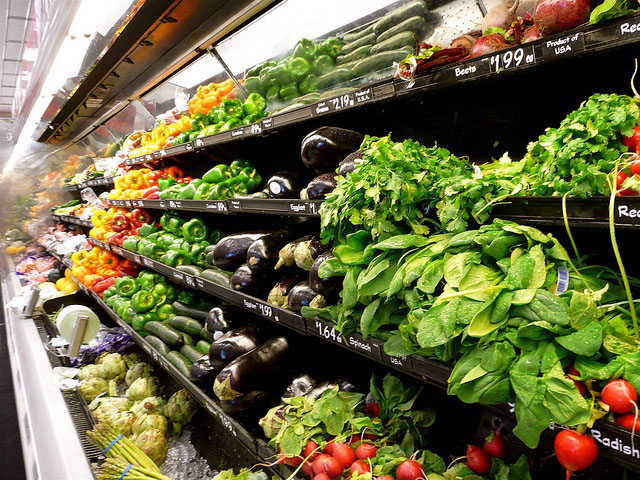 Photo by flickr user Scorpions and Centaurs / (CC BY-NC-SA 2.0)
Photo by flickr user Scorpions and Centaurs / (CC BY-NC-SA 2.0)## What are GMOs?
Plant and animal genetics have always been altered by humans through selective breeding of related organisms. But what we commonly call Genetically Modified Organisms, often referred to as transgenic, are organisms that contain genetic material into which DNA from an unrelated organism has been artificially introduced to create new traits, like resistance to drought, herbicides or pests. According to the New York Times, “For the most part, the spread of transgenic seeds into the American food supply has been purposeful, carried out by farmers and scientists who see enormous advantages in hardier plants.” [^1]
## Are they in the food I eat?
Chances are, yes. A February, 2012 New York Times article cited the Department of Agriculture as stating that last year “about 90 percent of all soybeans, corn, canola and sugar beets raised in the United States were grown from transgenic seed. Most processed foods (staples like breakfast cereal, granola bars, chicken nuggets and salad dressing) contain one or more transgenic ingredients, according to estimates from the Grocery Manufacturers Association, though the labels don’t reveal that. (Some, like tortilla chips, can contain dozens.)”
## What’s the controversy over labeling?
GMOs have passionate supporters and equally passionate detractors. While GMOs can make for hardier plants, better harvests, and arguably reduced pesticide use, consumers in the US tend to be resistant to the idea of eating foods made from GMOs, or at least eating them unknowingly.
> “In a 2010 nationwide telephone poll, 93 percent of those surveyed said that if a food has been genetically engineered or contains genetically engineered ingredients, it should say so on its label – a number that has been consistent since genetically modified crops were introduced. F.D.A. guidelines don’t require special labeling for GMOs in food, and products containing GMOs can still be labeled ‘all natural.’”[^3]
The labeling of GMOs is an ongoing debate in the US, but in Europe all genetically modified foods are required to be labeled. GMOs have encountered so much resistance in Europe that the German chemical group BASF said in January that it will transfer its main research into GM crops from Germany to the United States because of continued resistance to the crops in Europe.
## Why is this such a polarizing issue?
In a nutshell, opponents of GMOs in food argue that there has not been enough research done to assess risk, and that at a minimum GMOs in food should be labelled so the consumer can decide. Proponents of GMOs maintain that there is little difference between traditional plant breeding and transgenic breeding, that no toxicity has ever been proven, and no known health risks are associated with genetically modified foods. The Food and Drug Administration classifies transgenic foods as safe, though many scientists say it is too soon to assess the effects. [^2]
While there are legitimate concerns about GMOs such as pollen drift, fears that they will lead to a lack of genetic biodiversity, and theories that they could affect human health in unanticipated ways, in the most pragmatic sense GMOs with higher yields offer another tool to feed a booming world population at a time when the potential for land, oil and water crises is high.
An article in The Economist asserts that with India and China’s recent economic growth, “the world is likely to need much more food, at a time when arable land, water and energy become scarcer and more expensive. If they fulfill their promise, GMOs offer a way out of this bind, providing higher yields even as they require less water, energy and fertilizer.”
“In January, Bill Gates devoted most of his annual letter on agriculture from the Gates Foundation to the need for advanced technology. He later said that most people who object to transgenic agriculture live in rich nations, responsible for climate change that he believes has caused malnutrition for the poor,” writes Julia Moskin in the NYTimes piece.
It is difficult to wade through the information that both sides of this polarizing issue present, but the fact is you are probably already eating GMOs, and they are not currently specially labelled. The FDA has classified them as safe. Many of the answers both sides seek will best be answered in the future: What kinds of benefits can the next generation of transgenic organisms offer the world? Will they help eradicate hunger? What could the consequences be? In a world with more mouths to feed everyday, we may need GMOs more than we want them.
[^1]: New York Times: Modified Crops Tap a Wellspring of Protest
[^2]: Ibid.
[^3]: Ibid.
